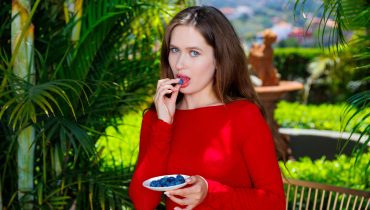When Vera Lowe’s youngest son, Jamie, was diagnosed with a dairy sensitivity at age four, mealtimes became emotional battlegrounds. The once joyous family dinners turned into tearful negotiations over cheese, milk, and butter — staples of comfort food. “He used to cry for macaroni and cheese,” Vera recalls, her voice soft but steady. “I didn’t want food to become a punishment.”
That challenge sparked an unexpected transformation. Instead of surrendering to dietary restrictions, Vera made them her creative frontier. Today, her kitchen hums with innovation — almond milk simmering for creamy soups, cashew sauces replacing cheese, and olive oil lending depth where butter once reigned. Her recipes have since become a lifeline for families navigating dairy-free living without sacrificing warmth, flavor, or joy.
The Hidden Challenge of Going Dairy-Free
Eliminating dairy isn’t as simple as skipping milk. Dairy finds its way into countless foods — from bread to sauces to processed snacks — making avoidance a daily puzzle. According to the National Institute of Allergy and Infectious Diseases (NIH), dairy is one of the eight most common food allergens, affecting millions of Americans. Yet, many parents struggle to find balanced meals that satisfy both nutritional needs and young taste buds.
For Vera, the early days were daunting. “Everything seemed to contain milk — even crackers,” she laughs. “At first, I felt like the grocery store was my enemy.” But as she researched, she discovered that many dairy-free alternatives were not just substitutes but nutritional upgrades. Almond and oat milks often contain added calcium; coconut yogurt offers probiotics; and nutritional yeast provides a cheesy flavor packed with B vitamins.
Her approach aligned with what Harvard Health calls a “nutrient-conscious substitution” — replacing rather than simply removing, ensuring no micronutrients are lost in the process. Vera’s philosophy was simple: dairy-free shouldn’t mean joy-free.
From Necessity to Art: Crafting Flavor Without Cream or Cheese
For many, dairy is synonymous with comfort — creamy sauces, gooey cheese, rich desserts. Taking it away can feel like stripping food of its soul. Vera refused to accept that. “Flavor isn’t only about fat; it’s about layers,” she explains. “When you remove dairy, you learn to listen to ingredients differently.”
She began experimenting with textures and techniques that mimic the luxurious feel of dairy. Blending soaked cashews into velvety sauces, using roasted cauliflower to create smooth bases for soups, and adding nutritional yeast for umami depth. Her now-famous “Creamy Cashew Alfredo” sauce has become a hit with kids who never realize it’s dairy-free. “It’s the almond milk that gives it creaminess, not cream,” she smiles.
According to the Cleveland Clinic, dairy-free diets can reduce bloating, improve digestion, and decrease mucus buildup in sensitive individuals. Vera experienced these benefits firsthand. “After a few weeks, my son’s sinus issues improved, and I had more energy,” she says. “We were all feeling better — even my husband, who was the hardest to convince.”
Cooking for Kids: Turning Skepticism into Curiosity
Convincing children to eat anything new — especially something labeled “healthy” or “different” — can be a test of patience. Vera knew she couldn’t just replace foods; she had to reimagine them. Her secret weapon? Involvement.
“Kids love ownership,” she explains. “When Jamie stirs the sauce or sprinkles herbs, he’s proud of what we make. That pride changes how food tastes.”
Her dinners often start with a story: the “Magic Green Pasta” made with spinach and basil, or “Sunset Curry” inspired by their family trip to Thailand. “Food is emotional,” Vera says. “If you make it fun, kids stop seeing restrictions and start seeing adventure.”
Research from Mayo Clinic supports this approach, showing that children are more likely to accept new foods when they participate in cooking and learn the story behind them. Vera’s storytelling approach transforms mealtime from struggle to connection — and that connection becomes the secret ingredient.
The Nutrition Behind Dairy-Free Living
Beyond taste, Vera wanted to ensure her family’s nutrition remained balanced. Removing dairy can risk deficiencies in calcium and vitamin D, but these can be offset through thoughtful choices. She leans on leafy greens, tofu, sesame seeds, and fortified plant milks. “It’s about building variety, not restriction,” she says.
According to WebMD, adults and children on dairy-free diets should monitor calcium intake closely but can easily meet requirements through non-dairy sources like kale, almonds, and fortified cereals. Vera incorporated these foods seamlessly — kale blended into pesto, almond butter in sauces, tofu baked into lasagna layers.
She also paid attention to gut health. Dairy elimination sometimes alters gut microbiota, which can affect digestion. Vera added probiotic-rich foods like sauerkraut, coconut yogurt, and miso. Studies from the National Center for Complementary and Integrative Health (NIH) confirm that maintaining gut diversity supports immune function and overall well-being.
“Once you understand what your body needs, cooking becomes a dialogue,” Vera says. “You listen, adjust, and respond with care.”
The Sensory Language of Dairy-Free Cooking
One evening, Vera made her “Golden Coconut Curry” — a blend of chickpeas, ginger, and turmeric simmered in coconut milk. The aroma filled the house, and Jamie came running into the kitchen. “It smells like sunshine!” he said. That moment — the sensory recognition of comfort — was her victory.
Flavor, she realized, could be built through spices, roasting, and layering. Instead of relying on dairy’s richness, she explored temperature contrasts and aroma. Roasted garlic, slow-cooked onions, and a hint of lemon zest became her culinary paintbrushes. According to Harvard Health, spices like turmeric, cinnamon, and ginger have anti-inflammatory properties and can enhance flavor naturally, making them ideal for dairy-free dishes.
“You start noticing subtleties,” Vera explains. “The nuttiness of quinoa, the creaminess of mashed sweet potatoes — food becomes multidimensional again.”
A New Family Table: Redefining Comfort and Connection
Over time, Vera’s dairy-free dinners became the norm rather than the exception. Friends were surprised to learn that her lasagna, soups, and casseroles contained no cheese or milk. The family’s table transformed — no longer defined by what was missing, but by what was possible.
Vera’s story resonated with families across social media. Her Instagram, filled with colorful dinner photos and heartwarming captions, drew attention from nutrition experts and parents alike. She began teaching workshops titled “Comfort Food Without Compromise,” helping families rediscover nourishment through creativity and compassion.
“I used to think food allergies limited joy,” she reflects. “Now I see they’ve expanded it. They forced us to cook with awareness, and awareness is the key to love in the kitchen.”
Her dinners are not merely recipes but reflections of resilience — proof that dietary change can strengthen family bonds rather than fracture them. “Every time my son eats without fear,” Vera says, “I know we’ve already won.”
Science Meets Story: Why Dairy-Free Can Benefit Everyone
Though Vera’s journey began with an allergy, her lessons apply widely. Studies from the Mayo Clinic and Cleveland Clinic suggest that many adults experience some degree of lactose malabsorption, which can cause bloating or discomfort. Reducing dairy can also support clearer skin and improved digestion in some individuals.
Still, Vera is careful not to present dairy-free as a cure-all. “It’s not about trends or extremes,” she says. “It’s about paying attention to how your body feels and making choices that align with that.”
She continues to evolve her recipes, focusing on inclusion rather than exclusion. Her kitchen is a place where children laugh, sauce splatters, and no one misses what’s gone — because what remains is abundant, nourishing, and made with love.
Conclusion: The Joy of Reinvention
Vera Lowe’s journey from restriction to reinvention reminds us that food is more than sustenance — it’s a language of care. Her dairy-free dinners show that creativity thrives under constraint, and that compassion can flavor every meal. Through experimentation, education, and empathy, she built a new table where every family member feels seen and satisfied.
In her words: “Cooking without dairy taught me something deeper — that when we remove what no longer serves us, we make room for what truly nourishes us.”




























































